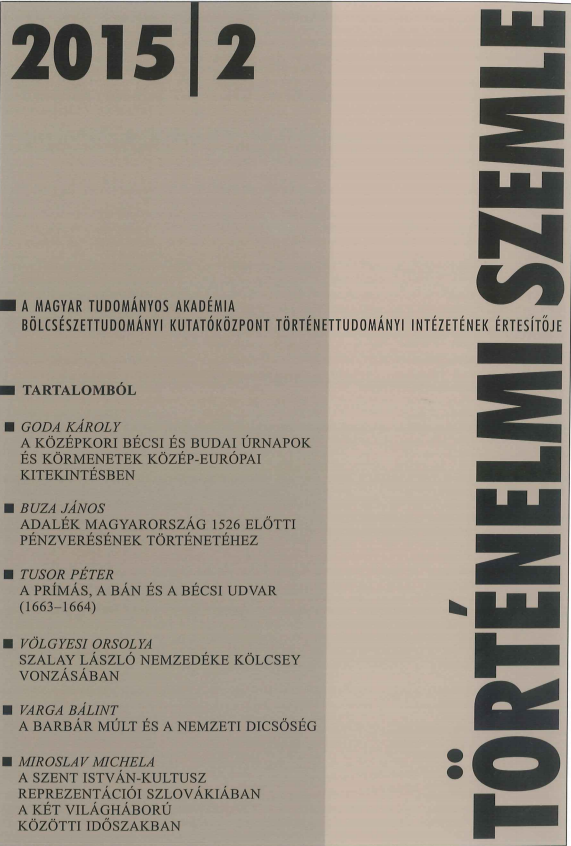A leleszi premontreiek szalókai birtoklásának háttere
The Background to the Landowning of the Premonstratensians of Lelesz at Szalóka
Author(s): Viktória KovácsSubject(s): Christian Theology and Religion, Law, Constitution, Jurisprudence, History of Law, Middle Ages
Published by: Magyar Tudományos Akadémia Bölcsészettudományi Kutatóközpont Történettudományi Intézet
Keywords: Premonstratensians; Szalóka; middle ages; provostry; history;
Summary/Abstract: Although the founding charter of the Holy Cross provostry at Lelesz (today Leles, Slovakia) from 1214, of dubious authenticity, has not survived in the original, one of its later transcriptions from 1334 lists among the grants made by bishop Boleslo of Vác in favor of the provostry a possession called Zolunta. The people of Zolunta are reported to have robbed Russian tradesmen, an act later proved by the tradesmen through ordeal in the church of Buda, whereupon Zolunta was adjudicated to them by court ispán (comes curialis) Egyed. The village was eventually bought by the bishop of Vác from the tradesmen for 82 marks. The possession in question has traditionally been identified in the research with Szalonta in the medieval county of Borsod (Hejőszalonta, Hungary). According to Ambrus Pleidell, however, the provostry owned Szalóka (Solovka, Ukraine), which was variously regarded as belonging to the counties of Bereg and Ung in the Middle Ages. In the course of various lawsuits in 1336, 1343 and 1378, the monastery proved its title to Szalóka in Bereg with the founding charter and its later transcriptions. It is likewise Szalóka that is recorded as a possession of the provostry by the tax register of 1550. In order to establish which possession was in fact owned by the monastery of Lelesz, the author examines the charters which have preserved the relevant part of the founding charter, as well as the medieval variants of the names of the two settlements and their history. Two among the three textual traditions of the founding charter (1214/1334/1342/1364/1406, 1214/1334, 1214/1362) contain variants of the toponym Szalonta, which thus probably figured in the charter of 1214 as well. In the summary transcriptions connected to the presentation of titles in lawsuits (1336, 1343, 1378) it is Szalóka which appears without exception. The forms of toponyms, while fairly similar to each other, certainly refer to different settlements. As for Szalonta, prior to 1319 it was owned by the Ákos kindred, and thereafter by Dózsa Debreceni, voevode of Transylvania – consequently, it surely did not belong to the monastery of Lelesz in the early 14th century. Szalóka, on the other hand, was owned in the first half of the 13th century by Artolf of the Aba kindred, from whom it was purchased by the son-in-law of ban Bánk called Simon. In 1270 it was in the possession of Mihály son of Endre of the Rosd kindred, and in 1285 in that of his widow and new husband, Jakab Lónyai. In a protest made before the chapter of Eger in 1302 the provost of Lelesz claimed that Szalóka belonged to his monastery. On the basis of this information, the most probable solution seems to be that, while the provostry had originally come into the possession of Szalonta by virtue of the founding charter, later in the Angevin period it used the document to prove its title to landowning at Szalóka. During the lawsuits, the monastery probably argued that the Zolunta/Zolounta figuring in the charters in fact referred to Szalóka in Bereg.
Journal: Történelmi Szemle
- Issue Year: 2015
- Issue No: 02
- Page Range: 265-280
- Page Count: 16
- Language: Hungarian

